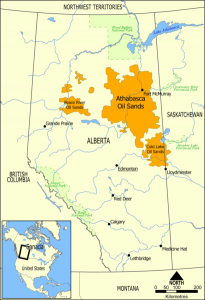Lots of interesting methane papers this week. In Nature Geoscience, Shakhova et al (2013) have published a substantial new study of the methane cycle on the Siberian continental margin of the Arctic Ocean. This paper will get a lot of attention, because it follows by a few months a paper from last summer, Whiteman et al (2013), which claimed a strong (and expensive) potential impact from Arctic methane on near-term climate evolution. That economic modeling study was based on an Arctic methane release scenario proposed in an earlier paper by Shakhova (2010). In PNAS, Miller et al (2013) find that the United States may be emitting 50-70% more methane than we thought. So where does this leave us?
[Read more…] about Arctic and American Methane in Context
References
- N. Shakhova, I. Semiletov, I. Leifer, V. Sergienko, A. Salyuk, D. Kosmach, D. Chernykh, C. Stubbs, D. Nicolsky, V. Tumskoy, and Ă. Gustafsson, "Ebullition and storm-induced methane release from the East Siberian Arctic Shelf", Nature Geoscience, vol. 7, pp. 64-70, 2013. http://dx.doi.org/10.1038/NGEO2007
- G. Whiteman, C. Hope, and P. Wadhams, "Vast costs of Arctic change", Nature, vol. 499, pp. 401-403, 2013. http://dx.doi.org/10.1038/499401a
- N.E. Shakhova, V.A. Alekseev, and I.P. Semiletov, "Predicted methane emission on the East Siberian shelf", Doklady Earth Sciences, vol. 430, pp. 190-193, 2010. http://dx.doi.org/10.1134/S1028334X10020091
- S.M. Miller, S.C. Wofsy, A.M. Michalak, E.A. Kort, A.E. Andrews, S.C. Biraud, E.J. Dlugokencky, J. Eluszkiewicz, M.L. Fischer, G. Janssens-Maenhout, B.R. Miller, J.B. Miller, S.A. Montzka, T. Nehrkorn, and C. Sweeney, "Anthropogenic emissions of methane in the United States", Proceedings of the National Academy of Sciences, vol. 110, pp. 20018-20022, 2013. http://dx.doi.org/10.1073/pnas.1314392110

